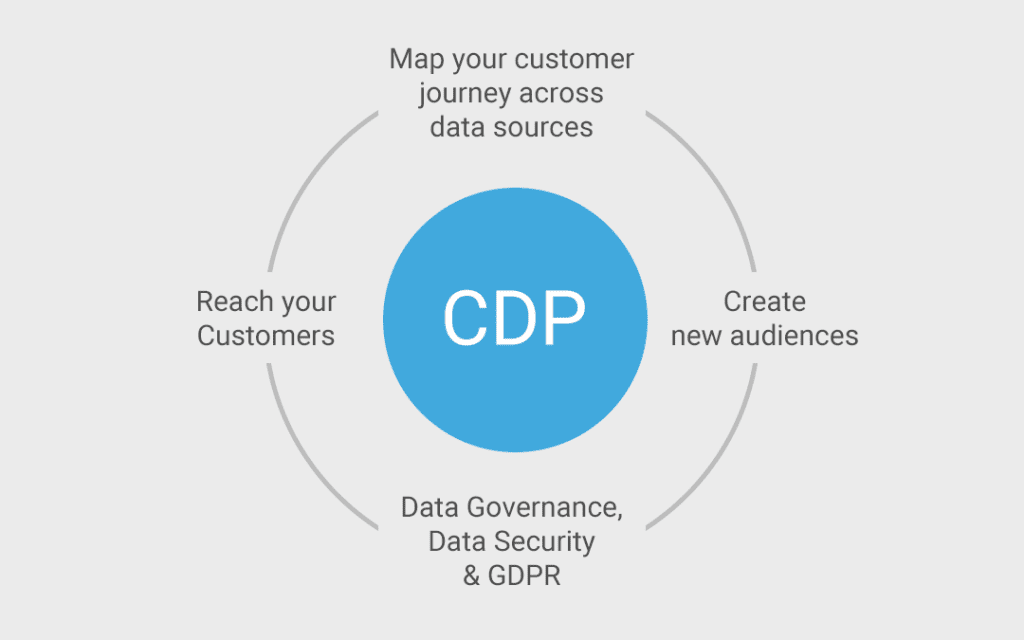In May of last year, I wrote a post about Customer Data Platforms (CDPs). I gave a pretty detailed overview of what they are, how to use them and planning considerations. I just took another look and still seems pretty relevant – of course, I may be a little biased 😉
Interest in CDPs hasn’t declined. The Customer Data Platform (CDP) Institute noted a 65% revenue increase in the category to $740 million (2018 over 2017) and forecast an increase to $1 billion in 2019. An additional 29 vendors joined CDP Institute ranks as well.
This tells me that lots of companies see a big opportunity to help you figure out how to harness your customer data to reach your customers. What should you do? Stand pat or jump on the CDP bandwagon?
I’d say that it doesn’t really matter what you do. To me, it’s just another example of calling something old by a new name. Data integration, 360-degree view of the customer, big data… these concepts all had (and are still having) their day in the sun. Is a CDP different? I don’t think it is – it’s just the focusing of data lakes on customer data in particular.
Vendors continue to promise that all of the power will be put into the hands of marketers, or that you can use data from any source. However, we know from experience that nothing that involves the use of disparate data sources, different teams and a variety of views on the metrics that count, is ever quite so simple. It reminds me of when analytics vendors promised that tag-based analytics systems would do away with the need for IT to be involved in analytics. It just isn’t the case.
As with any data-oriented project, you need at least 3 governance streams:
- Governance to ensure data integrity and trustworthiness
- Governance to ensure that there are enterprise or line-of-business processes to set priorities for projects and investment
- Governance to ensure that policies are set and enforced around data usage
While technology is important, I’ve been around long enough to see that initiatives don’t succeed or fail based on platforms. It’s always about how organizations figure out how to use them.
With the number of Martech options and vendors available today, it’s easy to think that vendor that says they specialize in CDP may be your silver bullet. Perhaps. On the other hand, I’d suggest you take time to do your requirements development, your due diligence on vendor selection, and an even deeper dive into seeing the platforms and tools that you have available already before selecting yet another vendor. Purchasing technology is not where the investment ends. It’s the beginning of figuring out how to integrate with existing systems and additional investment in configuration, customization, and training.
If you already have an existing Google Analytics infrastructure, I’d suggest you undertake a gap analysis between your requirements for a CDP and what you currently have. It may be that between GA360, BigQuery, and a visualization platform like Tableau, you have the infrastructure in place to start a CDP or CDP proof of concept.
Author

Chief Technology Officer Feras Alhlou previously co-founded E-Nor in 2003 and served as President until its acquisition by Cardinal Path in 2019. Feras is passionate about his work with some of the world’s most recognized brands and public sector organizations to deliver data-driven marketing value. A recognized thought leader on the Google Marketing tech stack, he has traveled the globe educating businesses, practitioners, and consultants, and he’s also co-author of Google Analytics Breakthrough: From Zero to Business Impact. Feras received a Masters of Engineering Management degree from the University of South Florida and a Bachelor of Science degree in Electrical Engineering from the University of Tulsa. He is a Certified Web Analyst, Board Member for Red Cross Northern California, and a 3rd-degree black belt in Aikido.
View all posts


















